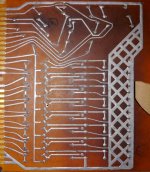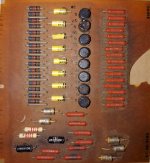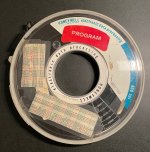M_T, yes it wasn't what hardware you got but what you paid for that seemed to matter and the level of maintenance needed was a factor in that so far as Honeywell were concerned. With one of our later larger machines we went through a short period when it had a particularly heavy workload, so our field engineer changed a connection in it to effect an upgrade to a faster machine. Whether it would perform reliably at that faster speed depended on how well maintained by him it had been, so it was his call. We found the Honeywell field engineers very helpful, as were all the Honeywell staff that we encountered. No doubt they made a big effort to give Honeywell a good foothold in Britain where ICL, formerly ICT, was the most likely choice of computer supplier for businesses. In fact I discovered that the best source of Honeywell 200 series documentation here is held in the ICL archives now at a site run by our national Science Museum. Their archives contain original proprietary documentation from all of their competitors, so is a great source for any vintage computer researcher. Some years ago I spent hours there searching through all the H200 files in it to glean useful information. In fact I have copies of the control panel physical assembly manifest which lists every nut bolt and washer as well as all the major components along with diagrams showing where the parts fit. However, building my own panel from scratch would have been pretty daunting, so being offered an original was great news, even if I have been waiting over seven years now for it to be sent.
Back in 1965 when the deputy manager of our company was choosing our first computer to replace our ageing tabulator equipment he decided to opt for the relatively new Honeywell 200 series of small computers, which was all that we initially needed. That was a radical decision as the machines were designed to operate on US mains supplies at a different voltage and frequency from UK supplies, so we had to install a rotary generator to power the computer room to provide a US environment within it. In fact everything about the computer system was alien to us, from the different standard letter size paper used for documents to the UNC screws used in the equipment. There was also the very coarse language, quite blue in fact, that was apparently used by Honeywell executives at meetings with our far more genteel management. As our work and financial products were so specific to our long established company, which had been formed by an act of parliament in 1835 and could still write cheques directly on the Bank of England itself when almost all other cheque accounts there had been closed a very long time ago, we wrote all our own software from scratch using every feature of the H200 in ways that even Honeywell hadn't envisaged, just to prove to our board of directors that the deputy manager had made the right decision. A few weeks ago I heard that he has just died in his nineties. When he retired from the company many decades ago he came to me and said "We really made that first machine sing, didn't we?" because that early success resulted in the company staying with Honeywell and upgrading to ever larger machines for several decades exactly as Honeywell themselves hoped. Towards the later part of the century new less enlightened management came in and replaced the Honeywell mainframe with an IBM one because they didn't know Honeywell systems, which threw us back into the stone age in comparison to what we already had. At that point I refused to work with the mainframe any more and moved across to the PC network, which ran IBM OS/2, but in fact I had been working on the branch offices' collection of Honeywell DPS6 machines for some time anyway. Although IBM mainframes were apparently stuck with decades of backward compatibility stopping them progressing, OS/2 was far better than WIndows at the time. Unfortunately we eventually changed over to Windows and some of my more advanced software developed for OS/2 simply couldn't be converted because Windows didn't have the ability to provide any equivalent functionality. Back then Windows hadn't yet moved over to the object model based structure used by both OS/2 and Apple computers. In 2000 the company, ailing for many reasons, was taken over and I took early retirement, but the senior manager who had overseen the replacement of Honeywell kit with IBM had been "asked to leave" long before that. Sacked for buying IBM? Really? 165 years in business was a pretty good run for the company though.



